Sights and Activities
Below are the places we saw and activities completed while visiting Colombia:
Cali
Rio Pance: this river just outside the city is popular amongst locals on weekends to go for a swim and have ‘sancocho de gallina’ (chicken soup). Gisela has a friend that owns a restaurant in La Voragine, a village adjacent to the river, where we ate and swam.
Cristo Rey: this 31m-high (102ft) Christ the King monument is located on a hill that offers the best views of the city.
El Gato: this famous city cat sculpture is located next to the Cali River. The cat was made by Hernando Tejada and behind ‘El Gato’ are ‘Las Gatas,’ female cat sculptures.

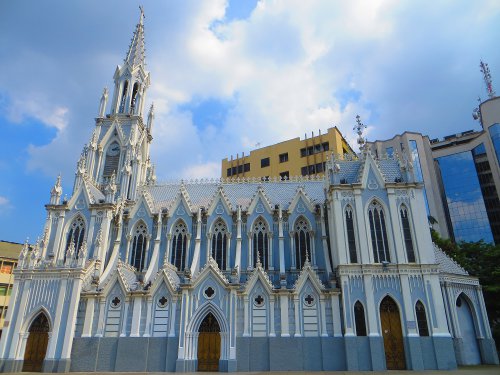
Iglesia La Ermita: we were not only able to admire the exterior of this gothic church, but also entered this 1942 construction.
La Merced Church: the city’s oldest church dates back to the mid-16th-century.
Teatro Municipal: this Municipal Theater located in the center of the city was declared a national monument in 1982.
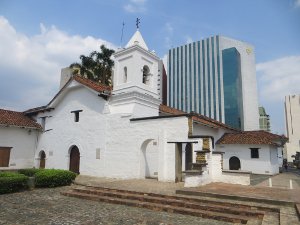

Medellin
Plazoleta de las Esculturas: this plaza is also known as Botero Plaza for the 23 sculptures by Colombian artist Fernando Botero, who donated them.

Museo de Antioquia: this museum features pre-Hispanic, colonial, independence, and modern art collections, spanning a 400-year-long history. There is one floor completely dedicated to Fernando Botero’s artwork that he donated.


Palacio de la Cultura: this Palace of Culture located in the Botero Plaza caught our eye. It houses cultural programs, such as concerts, conferences, and art exhibitions. The palace was designed by Belgian architect Agustín Goovaerts with a Gothic Revival style.
Catedral Metropolitana: this cathedral was completed in 1931 with a neo-Romanesque design.
Basilica de la Candelaria: we were able to visit the interior of this basilica built in the 1770’s and functioning as the city’s cathedral until 1931.
Metrocable: we were impressed by the city’s public transportation options, including these two cable cars that not only provide great city views, but also offer a vital transportation option for the impoverished hillside communities.
Parque Arvi: at the end of one of the public cable cars is a third cable car that leads to this city park. We only spent a short time roaming around since a guide is needed to visit any of the trails.

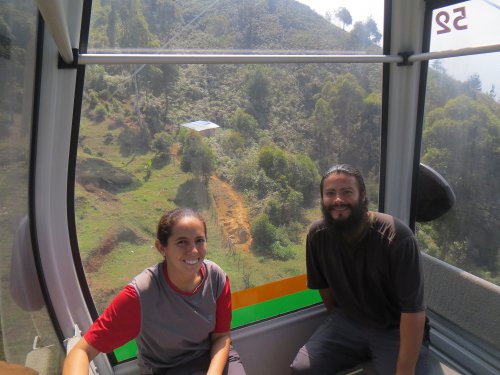
Casa Museo Pedro Nel Gomez: set in the house where this artist lived and worked, the converted museum houses nearly 2000 of his works including watercolors, oil paintings, drawings, sculptures, and murals.
Museo Casa de la Memoria: this Museum House of Memory is a dreaded reminder of the country’s armed socioeconomic conflict from the 1940’s until present. The well organized museum ran us through the history with photography, newspaper clippings, and various multimedia displays.

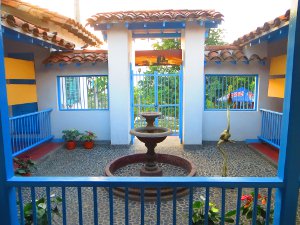
Cerro Nutibara: we hiked up to this hill to get panoramic views of the city and view a replica of a typical village, Pueblito Paisa that has been built in the summit.
El Poblado: we walked around the city’s affluent neighborhood with its shopping malls, high rise buildings, and ‘Zona Rosa’ filled with bars, clubs and restaurants.
Santa Marta
Catedral de Santa Marta: one of the country’s oldest church was not actually completed until the end of the 18th century. It holds the ashes of the town’s founder, Rodrigo de Bastidas.
Quinta de San Pedro Alejandrino: this is the estate where Simon Bolivar (the liberator of the Northern South American countries) spent his last days and died. The main house has been preserved with many of the original furnishings. The large complex is full of lush vegetation and also contains another exhibition of contemporary art.

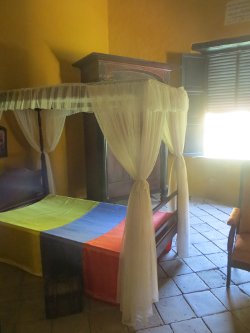
Rodadero Beach: we were able to see the sunset from this popular beach amongst locals located in Gaira bay.
Termales del Cordoba: we spent half-a-day relaxing in these natural hot springs rich in minerals and Gisela also received a mud bath. The area is surrounded by lush green vegetation.

Tayrona National Park
One of the country’s most popular national parks is set in a beautiful region. The park was named after the indigenous people that still have some say over the land. A few months prior to our visit, the park was closed due to their request to let the land rest. Unfortunately, from what we were able to see the park was not being managed properly: too many businesses with loud generators, overcrowding due to no limit on people who enter, and people and park businesses not obeying park rules by taking and selling alcoholic drinks and the rangers not doing anything about it. These were a few examples of the items that disappointed us and understand the concerns of the Tayrona people. Regardless of the problems the park faces, we were able to enjoy the splendor of the huge boulders adjacent to aqua blue waters. We spent our days hiking to Pueblito, the remnants of a pre-colonial village of about 2000 inhabitants at its peak, and to trails where we pass beautiful viewpoints and beaches too dangerous for swimming, such as Cañaveral and Arrecifes Beaches. We also spent time swimming in beaches that were safer due to natural wave breaks, such as La Aranilla Beach, La Piscina Beach, Cabo San Juan de la Guia Beach, and La Piscinita Beach.

Cartagena
Castillo de San Felipe de Barajas: this was the greatest fortress constructed by the Spanish in any of their colonies. Construction of it began in 1639 but was not completed until some 150 years later. It proved to be truly unassailable and was never taken.
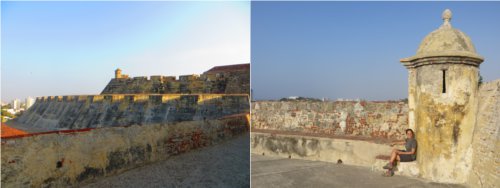

Plaza de los Coches: the main gateway into the walled city is through what is now the Puerta del Reloj (the clock tower was added in the 19th century) and leads right into this plaza. This square was once used as a slave market. On the other side of the plaza is El Portal de los Dulces, an arcaded walkway where they sell dozens of local sweets.
Catedral de Cartagena: this cathedral’s construction began in 1575, but was partially destroyed by the pirate Francis Drake in 1586, and not completed until 1612.
Palacio de la Inquisicion: this Palace of the Inquisition is an excellent example of late-colonial architecture. Today, it is a museum displaying over 200 years of the Inquisition by the Catholic Church with different artifacts used and by telling the history of the city.
Plaza Bolivar: we were able to enjoy this leafy plaza during the day and at night, when we witnessed a performance of Afro-descendant music and dance.
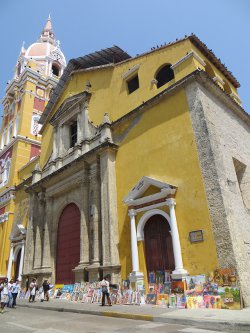
Traditional Dancing in Plaza Bolivar
Museo del Oro Zenu: this museum had a good collection of gold and pottery from the Zenu culture.
Iglesia de Santo Domingo: this is the city’s oldest church.
Las Murallas: the old town is surrounded these thick city walls to protect it. They were built toward the end of the 16th century after the attack by pirate Francis Drake. The project took two centuries to complete due to repeated storm damage and pirate attacks.


Convento & Iglesia de San Pedro Claver: this convent is named in honor of Spanish-born monk Pedro Claver, who lived here ministering to the slaves brought from Africa.
Plaza de la Aduana: the oldest and largest square in the old town, it was used as a parade ground and all government buildings were gathered around it.
Las Bovedas: 23 dungeons built in the defensive walls at the end of the 18th century served to hide gold and other precious items. Today, the dungeons are tourist shops.
